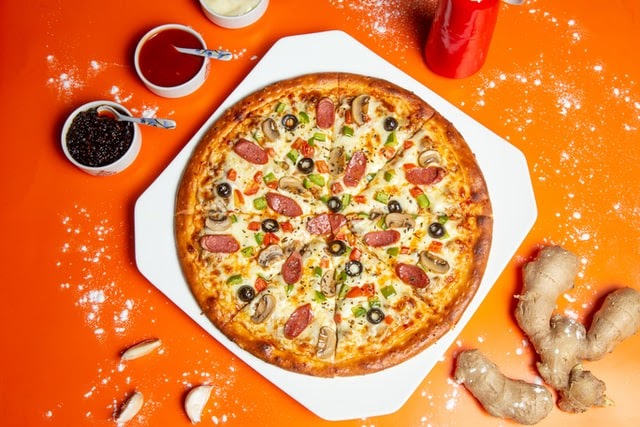
How Much Does A Pizza POS System Cost?
When it comes to point of sale needs, pizza parlors deserve their own unique solutions.
That’s because they have different needs than other restaurants. The ordering process is different, for one, and pickup and delivery features are especially important.
The good news is that if you’re looking for a pizza POS system (or are considering upgrading the one you’re using now), you have plenty of options to choose from that cater specifically to the needs of pizza parlors — at price points that don’t necessarily put undue financial stress on your pizza shop.
So, how much does a pizza POS system actually cost? In this article, we’ll explain exactly which features and components determine the price and value of your new system.
Features You Need In A Pizza Point Of Sale
Price is important, but the price doesn’t always make sense without the context of what you’ll actually get for any given amount. After all, even the least expensive POS system will amount to a wasteful expense if the system doesn’t improve your pizza restaurant’s relationship with customers and make it easier for you to manage the restaurant’s finances and operations.
Todays’ web-based, digital POS systems have come a long way from standard cash registers. You can expect much more than solid financial reports and a smooth checkout system, including features like these:
- Online ordering – Many small pizza parlors may still consider online ordering a feature that’s simply nice-to-have in their point of sale system, but we’re listing it here first because we consider it a must-have. As we wrote in our post on the advantage of an online ordering system, giving your customers the option to order for themselves is a convenience that customers increasingly expect restaurants to offer — and that includes pizza restaurants. Especially after COVID-19, customers have embraced the conveniences of online ordering and are more likely to patronize those restaurants that make it super easy to order online.
- Customized ordering for pizza – Unlike the ordering systems for other restaurants, customers ordering pizzas should be able to essentially build their meals from scratch, adding any ingredients they want and placing them on different halves of the pizza — and even breaking the pizza down into smaller components! Customers should also be able to add and remove ingredients from set or specialized pizzas on the menu, and be able to customize things like sauce and crust.
- Delivery and driver management – If there’s any type of restaurant that typically relies on delivery, it’s a pizza restaurant. Look for a POS system with robust delivery features, including the ability to assign orders to third party drivers or to in-house drivers. The best POS systems for pizza restaurants will have an app specifically for drivers to use, and the ability for managers to track drivers on their routes. Customers should get notifications of drivers’ progress and be able to rate and give feedback on their delivery experience.
- Loyalty and referrals – Many Americans order pizza regularly, so choosing a system that encourages your customers to order from your store each time they order a pizza can have big payoffs. Look for a POS app that allows customers to automatically earn points with their purchases, as well as rewards for referring friends or making certain purchases.
- Customer analytics – This is another core POS feature that’s just as important to pizza parlors as it is to fine dining restaurants. Access to the right data can help you analyze customer order trends and understand your customer’s needs by observing how orders change according to factors such as the customer’s location, the time of day or week they order, the types of food they order, and more.
- Ingredient tracking and costing – The profitability of your pizza business will depend on many things — the ability to attract new customers and then deliver a consistently excellent experience that keeps them coming back, for example. But it’s difficult to stay profitable if you aren’t charging the right prices for the items on your menu. Good POS software can automatically calculate the profitability of each pizza, salad, calzone, or other meal on your menu, and adjust as raw ingredient prices fluctuate over time. You can even design your menu to emphasize the most profitable menu items.
- Ability to handle growth – Many pizza entrepreneurs have dreams of eventually expanding their brands, opening more locations or even starting a pizza shop franchise. If this describes you, it’s best to choose a POS system that can grow along with your restaurant and is built to accommodate multiple locations and even rapid expansion.
What You’ll Pay For
Most of the features we just mentioned were software features, but of course, you’ll pay for more than just software when you invest in a new pizza POS system. Here are the main components of what you’ll need, and a general idea of what each one costs:
- Monthly software costs – You can expect to pay monthly for most POS systems these days. Unlike legacy software that’s downloaded onto a local machine, most modern POS systems are hosted semi-remotely, with monthly costs that include the price of security, backups, and continuous updates. It’s important to look past the price tag, as we just mentioned, and make sure that you know what features you’re getting access to for each price point. Some programs charge extra for some of the features that you might consider crucial, such as online ordering.
- Credit card reader – Some smaller businesses, such as food trucks, may be able to get away with using a smaller credit card reader that simply inserts into a mobile device POS system, but in most cases, you’ll buy a credit card reader that’s bundled with a terminal. Make sure that your credit card reader is EMV compliant.
- Terminal and stand – This is the most essential hardware component of your POS system, and the costs (including a stand, many of which swivel back and forth between a manager display and a customer display) cost several hundred dollars. You will probably pay upwards of $800 for a terminal that’s bundled with a credit card reader.
- Cash drawer – Although some pizza shops have limited their business to online orders and credit card payments, most still accept cash in some form. If you accept cash, you’ll need a cash drawer to accommodate it. Cash drawers usually come bundled into terminal hardware.
- A receipt printer – Like cash drawers, receipt printers generally come bundled into a POS terminal. However, you can expect to pay approximately $300-$400 for each additional receipt printer you think you’ll need.
- Kitchen ticket printer – Some restaurants opt to print kitchen tickets, as well as receipts, so you should budget several hundred dollars for each one you need.
- Kitchen display system – Instead of printed kitchen tickets, you may opt to invest in a digital kitchen display system, which shows orders and order details digitally on a screen in the kitchen. These systems have serious advantages, as they’re updated in real time as orders come in and are completed. You can expect to pay upwards of $1,000 for a kitchen display system (but keep in mind that you’ll save a bit of money on a kitchen ticket printer).
- Tablets for mobile ordering – If you want to offer tableside ordering, you may want to invest in POS-compatible tablets and cases. Some systems allow you to use any internet-connected device for their software, but others require you to purchase a tablet directly from them or to buy a certain type of tablet (such as an iPad). Some pizza restaurants, such as those operating from food trucks, may operate exclusively via a handheld device equipped with an insertable credit card reader and skip the cost of a terminal all together.
- Router, internet, cables – This is a relatively minor expense compared to the rest of what software costs, but it’s worth noting that you’ll need reliable internet and cables to connect all your hardware. You can expect to pay about $400 for a consumer-grade router to keep your POS system working properly (the kind you have for your personal use at home won’t be able to handle the demand).
How Pizzeria POS System is Structured
Beyond the hardware and software costs, you’ll want to understand how pizza POS system prices may change over time and other factors that influence the total cost of the software.
Here are other things to keep in mind as you evaluate pizza POS system prices:
- Contracts – You’ll typically get lower prices if you agree to longer contracts, but agreeing to longer software contracts is risky unless you are already familiar with a particular system and are relatively confident that your needs won’t change in the near future — and we all know that can be tough to do in the restaurant business.
- Hardware exclusivity – Similar to contracts, buying a bunch of system-specific hardware can be a risky proposition, as you may not be able to use that hardware for any other system if you decide to switch.
- Price increases over time – Many programs start out at more affordable rates for smaller businesses, but charge more over time based on how much the program is used. They may charge extra for each location, for example, which is something you should understand upfront.
- Finance fees – Most POS systems have relationships with payment processors that can result in better deals for you over time. Some actually require you to use their own payment processor, which can affect the overall price of the software.
- Software features – Sure, we’ve already mentioned this, but it bears repeating that a software program that includes features like email marketing, driver tracking, and online ordering can present a ton of cost savings compared to programs that require you to pay for these apps separately. It can also lead to headaches with integrations and compatibility. Make sure you know which features are included and which you’ll need to pay for separately to understand the true cost of your software.
An Affordable, Feature-Rich Pizza POS
We don’t want you to spend a fortune when you switch to Truffle POS. Our pricing model depends on how big your business is, and pricing plans start at $69.99 and can go up depending on your needs. Our program comes with a full suite of driver tracking features, online ordering features, and customer marketing features, so you won’t have to pay for them elsewhere.
We don’t want you to spend a fortune when you switch to Truffle POS.
We’ve designed Truffle POS to work with the most commonly used POS hardware. Our hardware compatibility team will even work with yours to find the best use for hardware that you already own. This minimizes the intimidating upfront costs that smaller pizza shops can face when adopting a new POS system.
Finally, we work with a variety of major payment processors, including Moneris, First Data, Chase Paymentech, and Global Payments, so you can choose the one that works best for you. We offer our customers exclusive rates through Global Payments.
Want to learn more about Truffle POS? Book a 30-minute demo to see Truffle POS in action.





